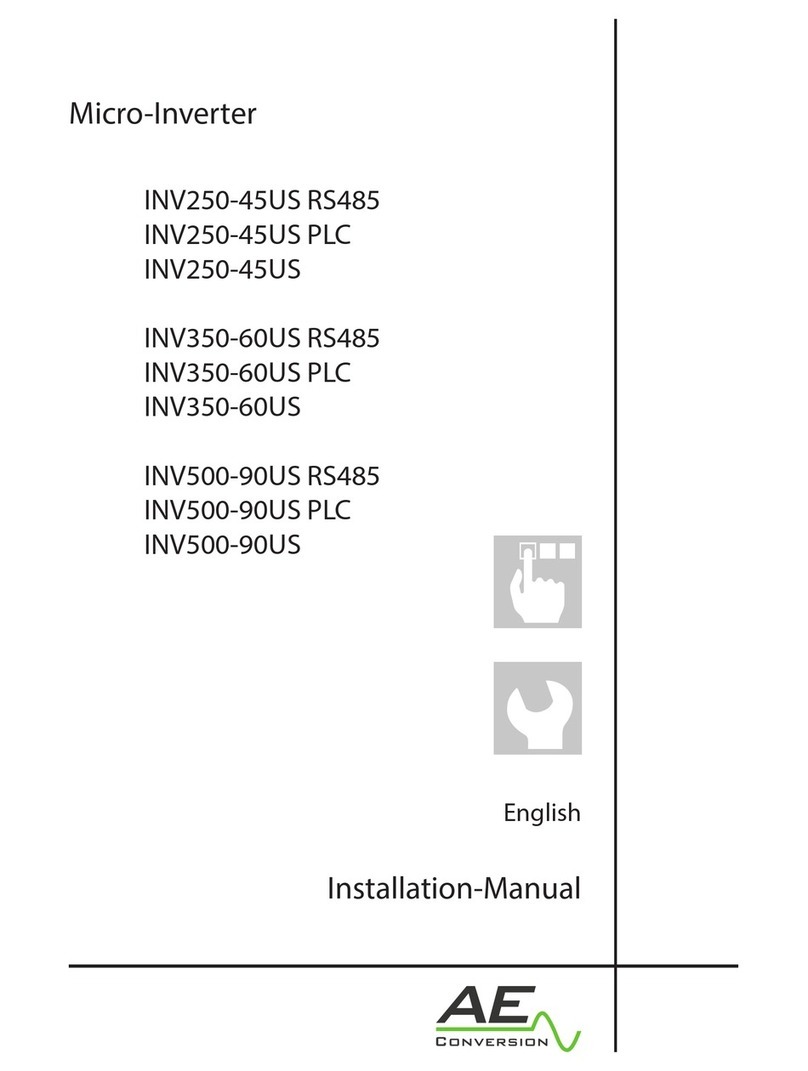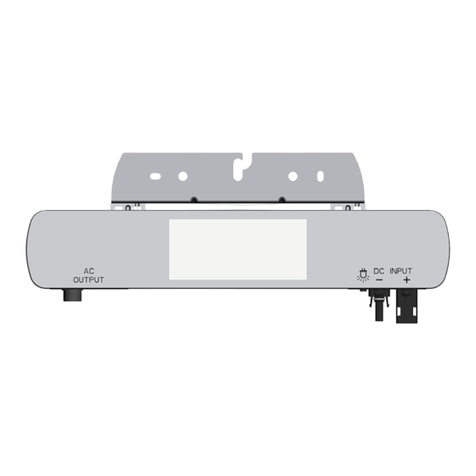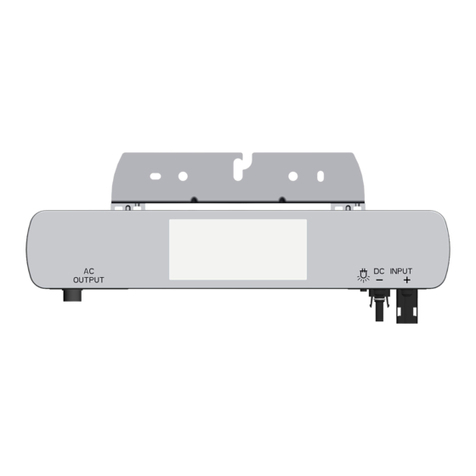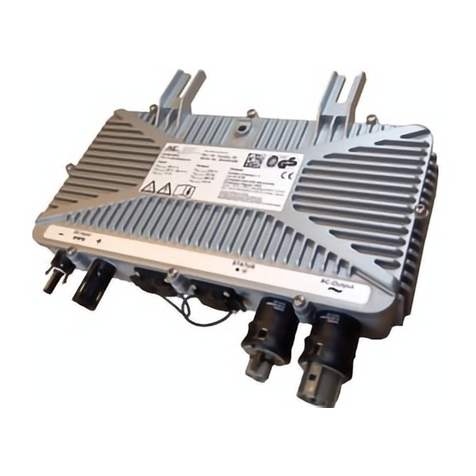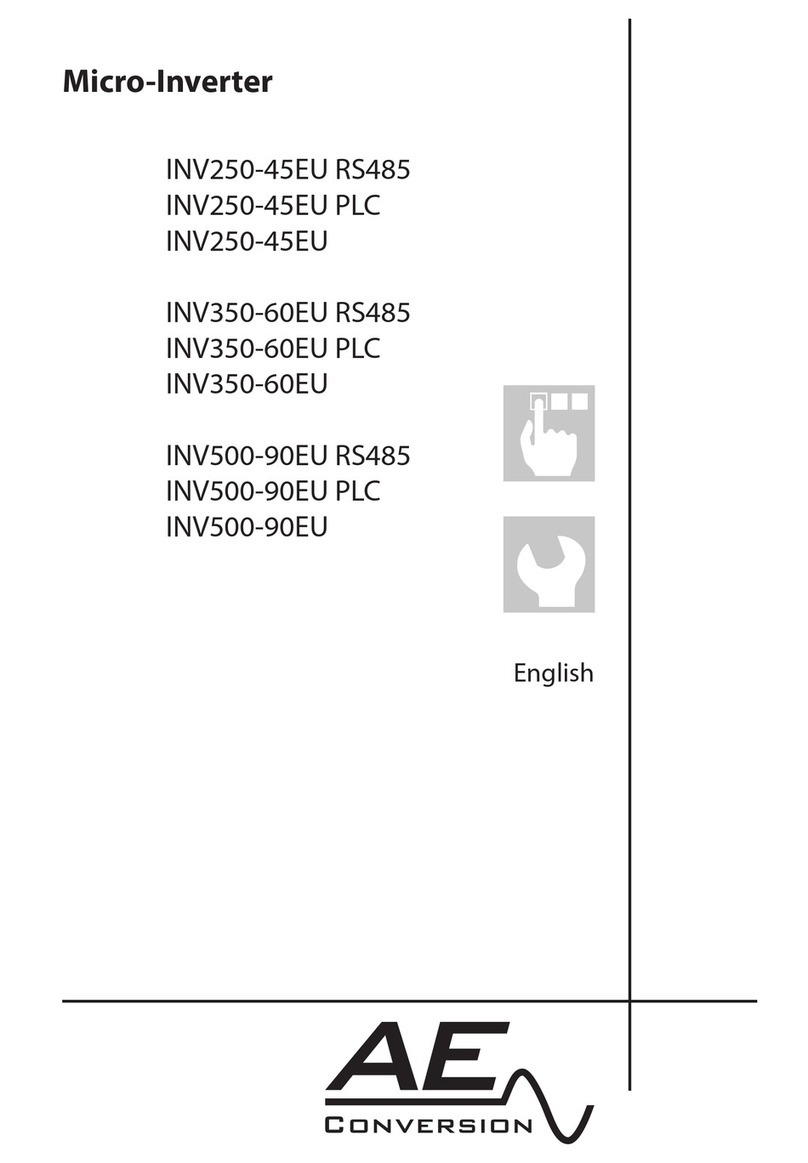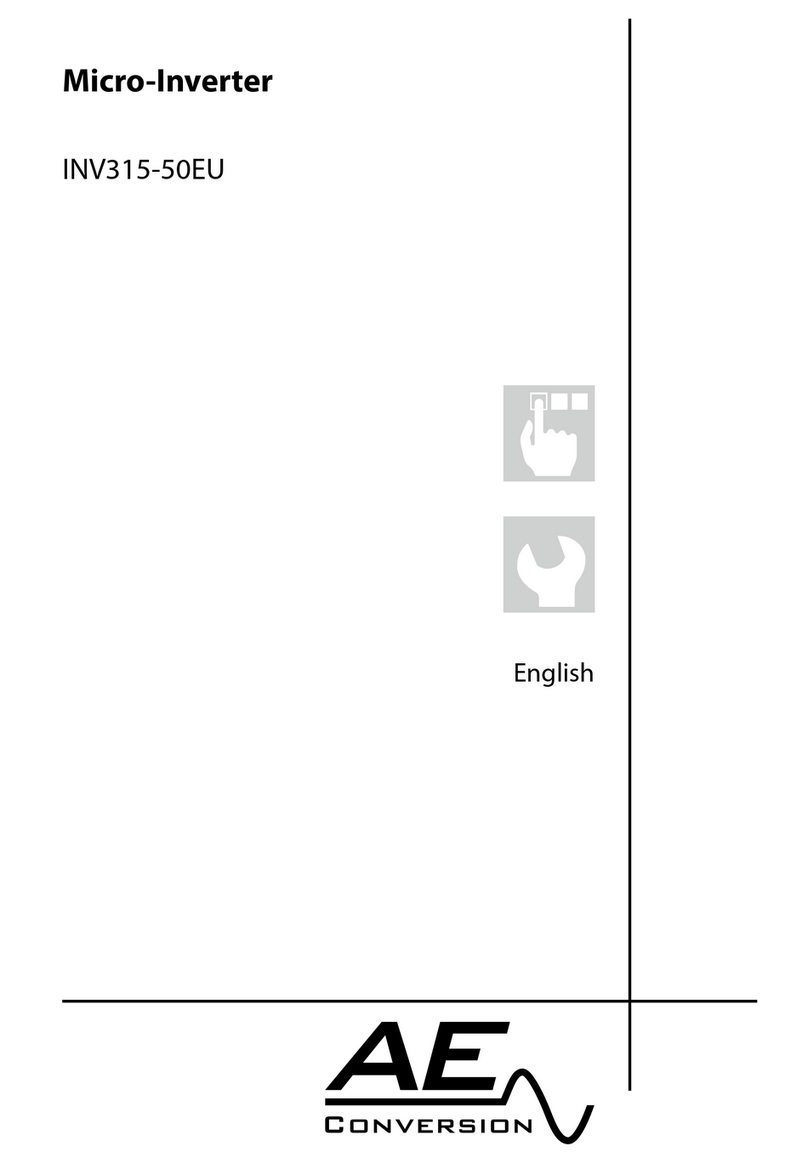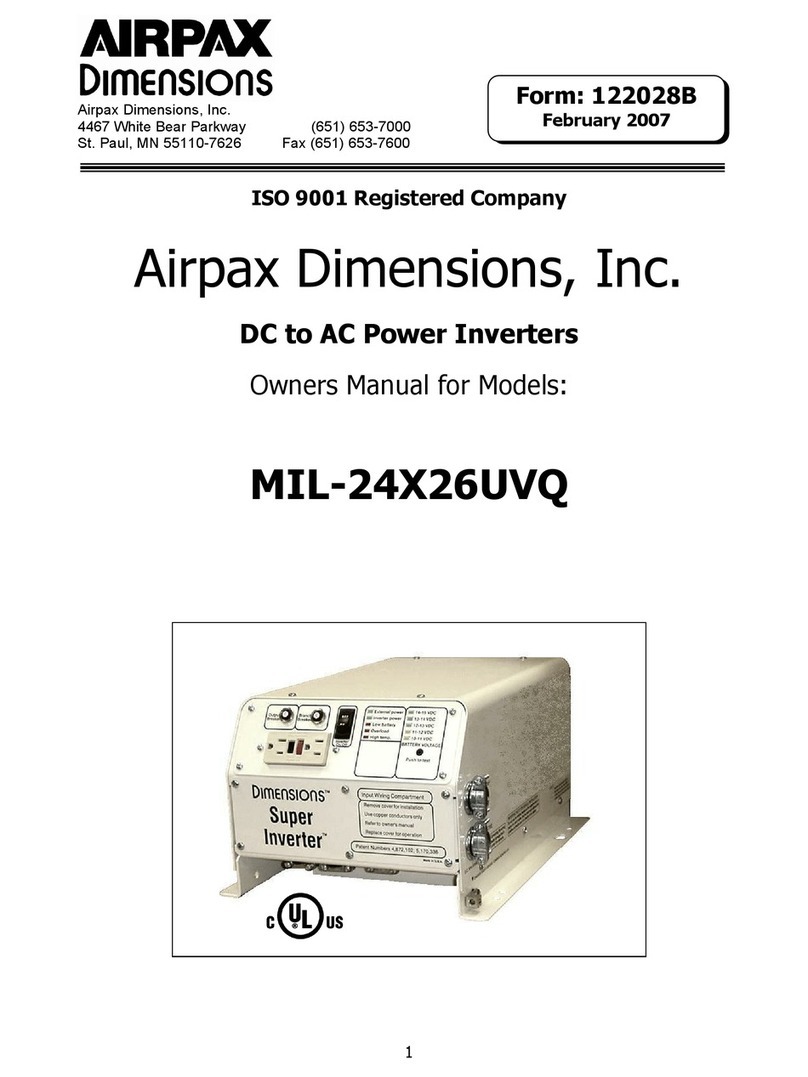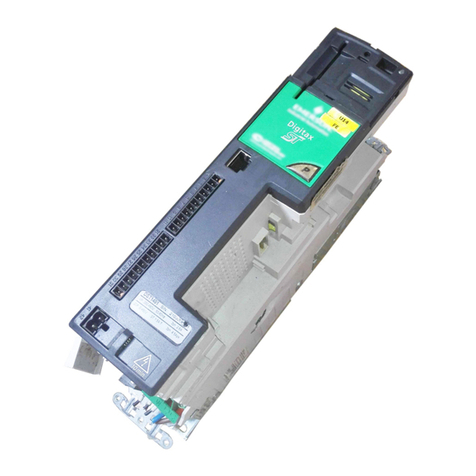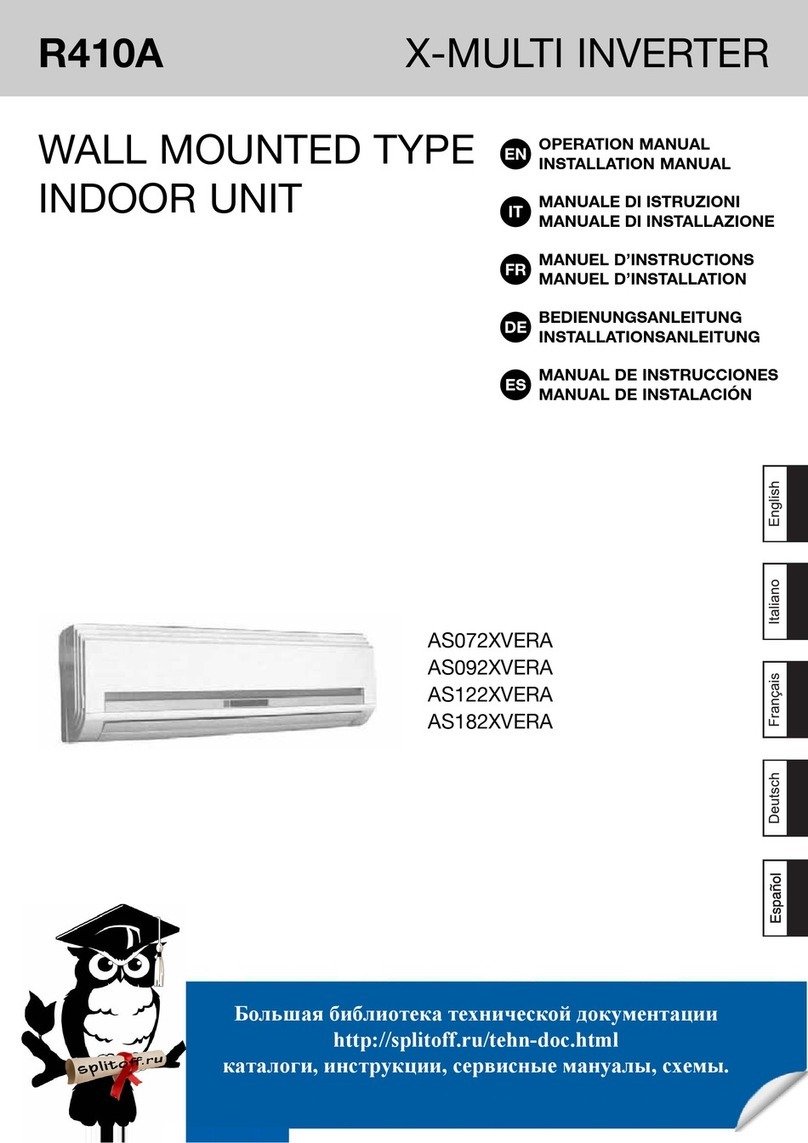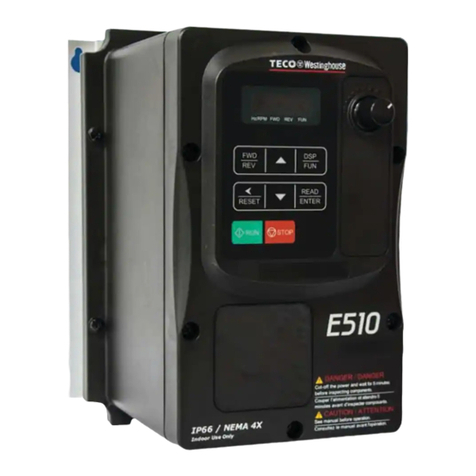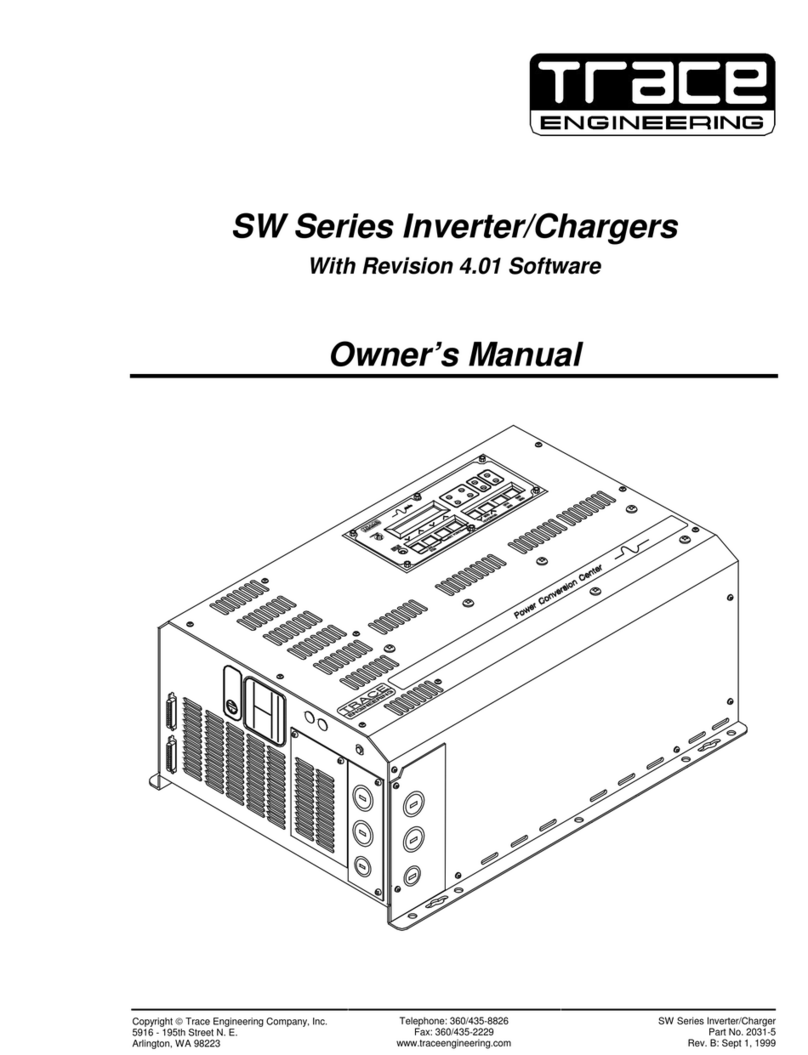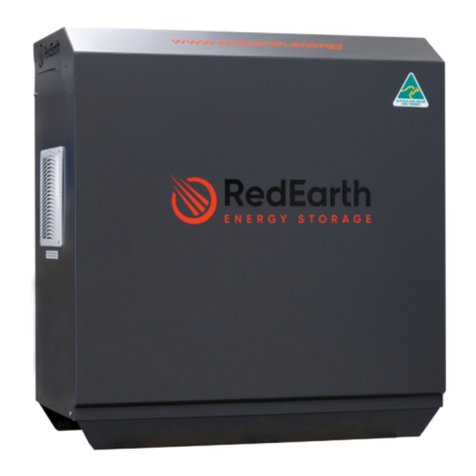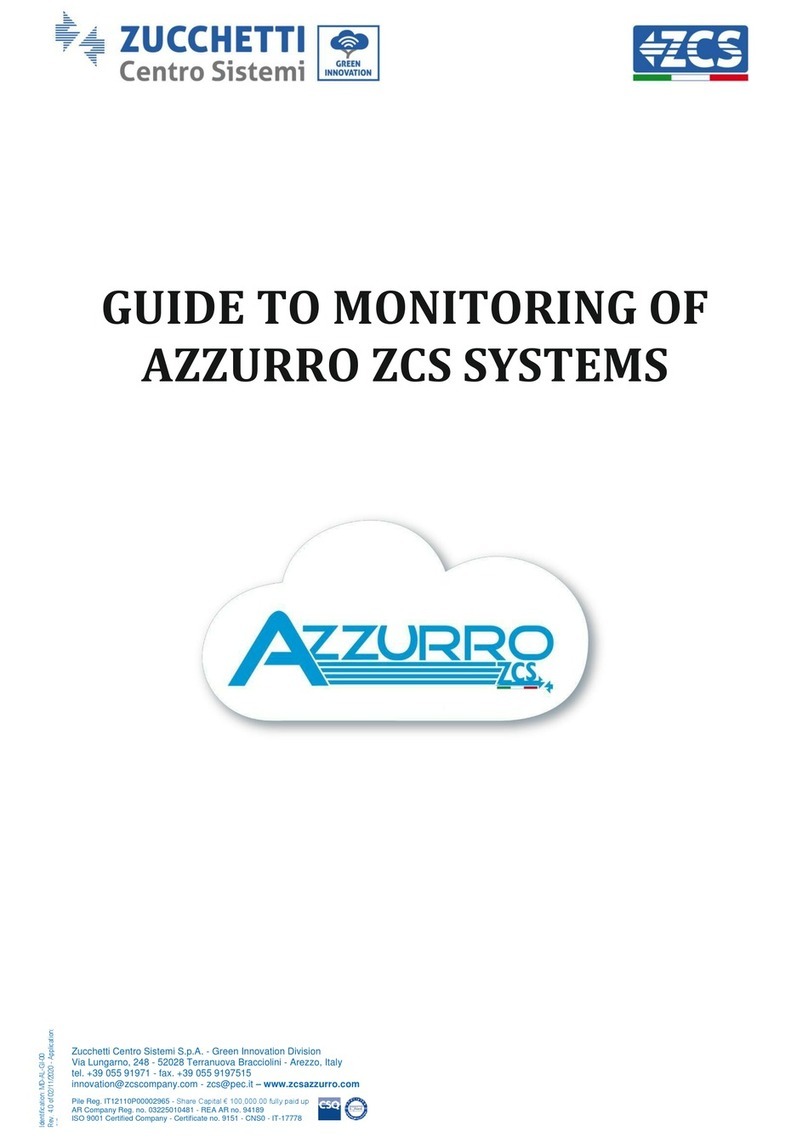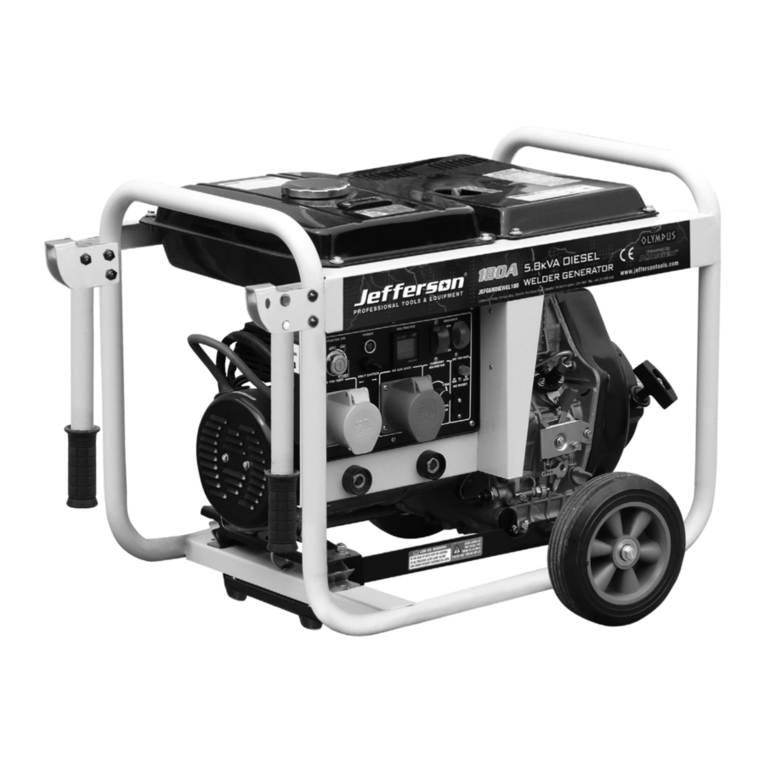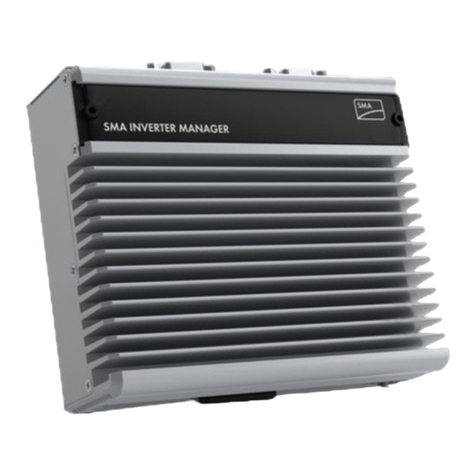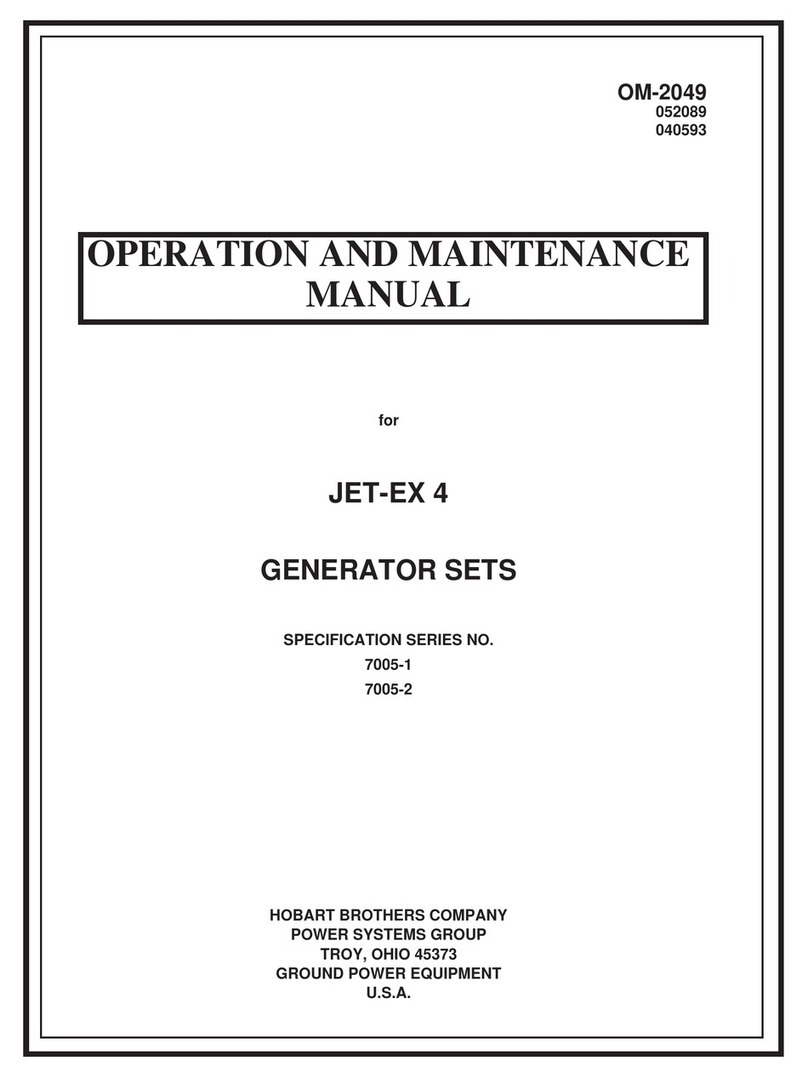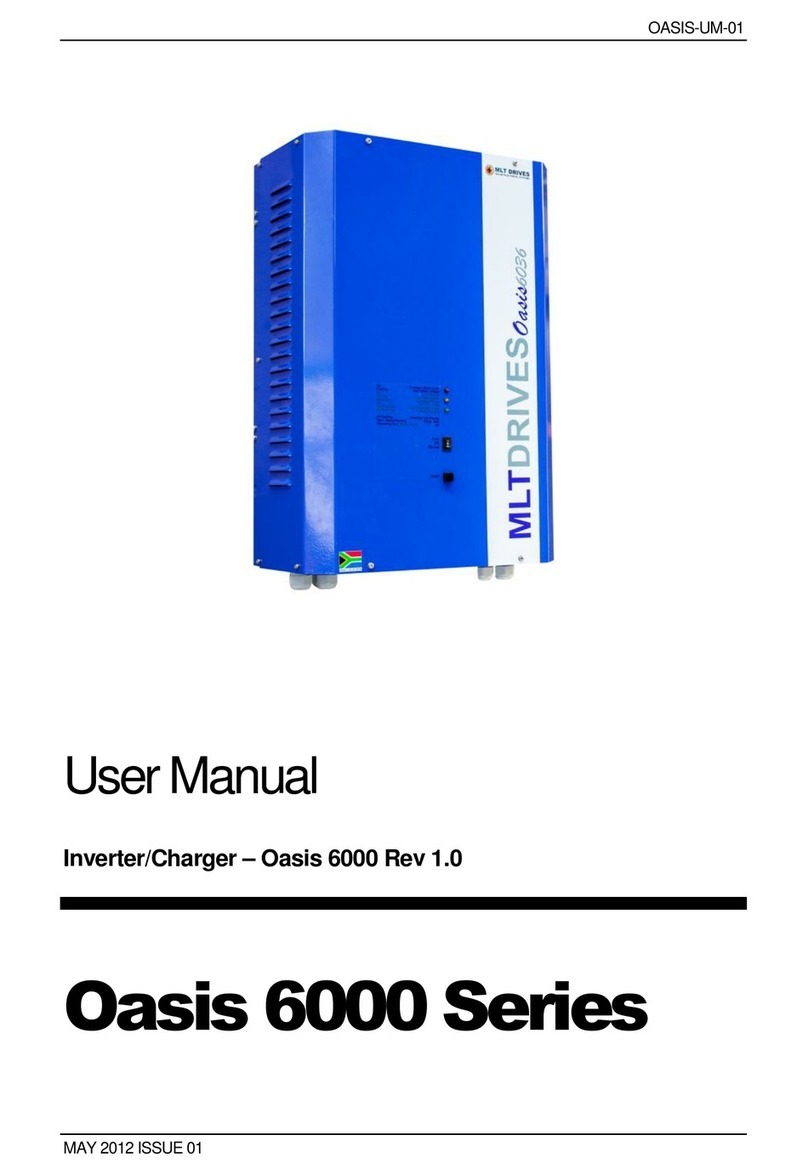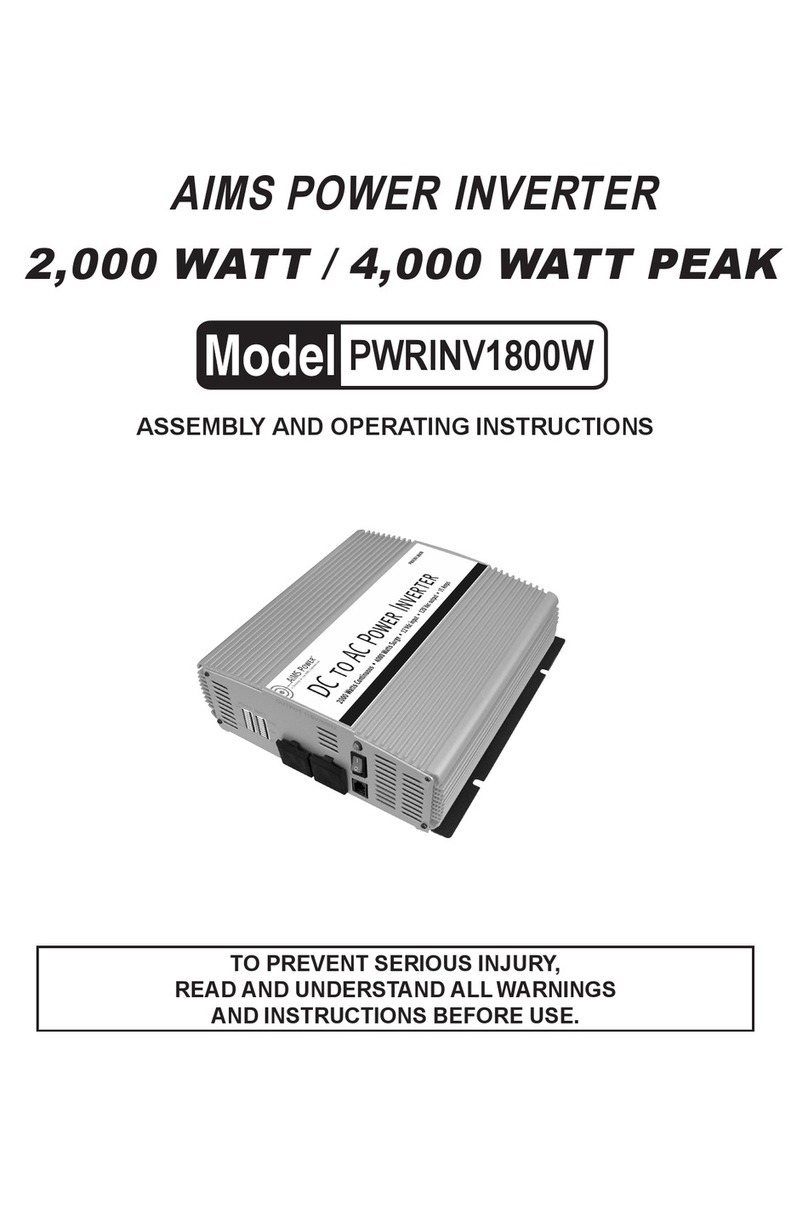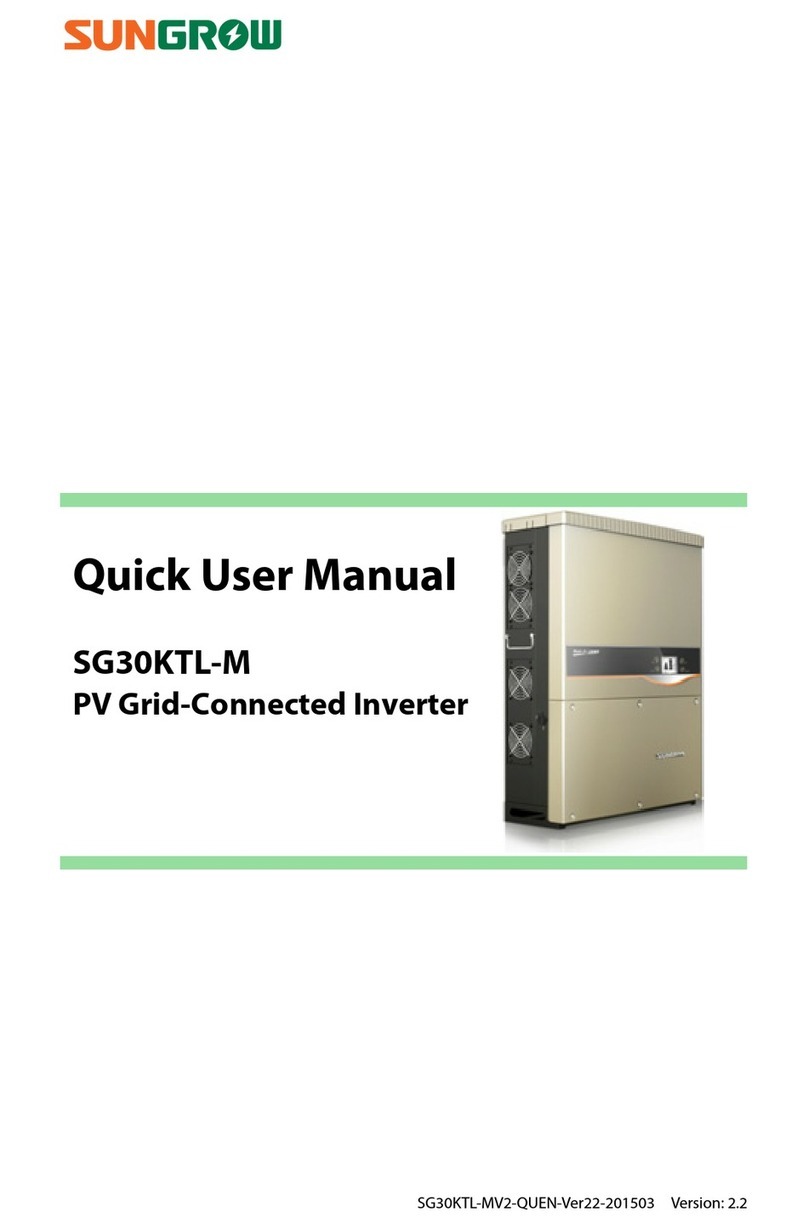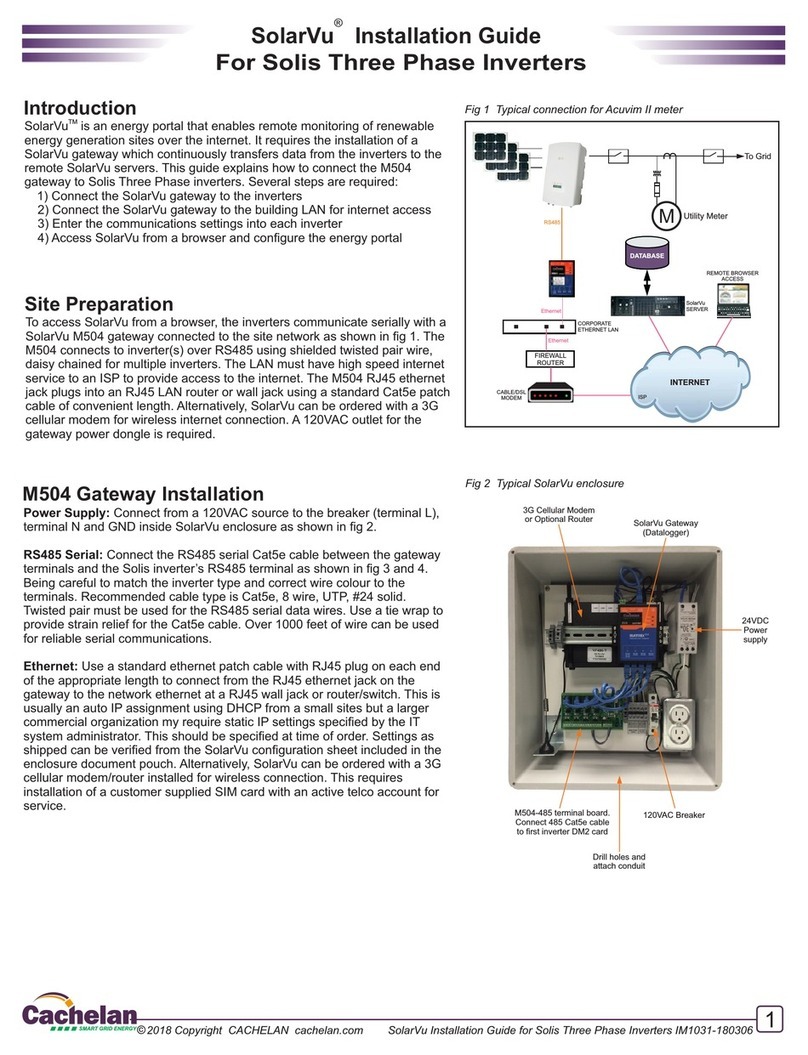
AT - Austria (PN# -02)
Nom. AC voltage range: 184 V ... 264 V
AC frequency range: 47.5 Hz ... 51 Hz
Product Safety: IEC 62103:2003, IEC 62109-1:2007, IEC
55011B, ÖNROM E8001-4-712, EN 50178:1997
GR - Greece (PN# -08)
Nom. AC voltage range: 184 V ... 264V
AC frequency range: 49.5 Hz ... 50.5 Hz
Product Safety: IEC 62103:2003, IEC 62109-1:2007, IEC
55011B, VDE 0126-1-1:2006 with deviations, EN
50178:1997
NL - Netherlands (PN# -10)
Nom. AC voltage range: 195.5 V ... 253V
AC frequency range: 48 Hz ... 51 Hz
Product Safety: IEC 62103:2003,IEC 62109-1:2007,IEC
55011B, VDE 0126-1-1:2006 with limits of EN
50438:2007, EN 50178:1997
DE - Germany (PN# -01)
Nom. AC voltage range: 184 V ... 264 V
AC frequency range: 47.5 Hz ... 51.5 Hz
Product Safety: IEC 62103:2003, IEC 62109-1:2007, IEC
55011B, VDE-AR-N 4105, EN 50178:1997
CH - Switzerland (PN# -18)
Nom. AC voltage range: 184 V ... 264 V
AC frequency range: 47.5 Hz ... 50.2 Hz
Product Safety: IEC 62103:2003, IEC 62109-1:2007, IEC
55011B, VDE-AR-N 4105, EN 50178:1997, VDE0126
TR - Turkey (PN# -12)
Nom. AC voltage range: 184 V ... 264 V
AC frequency range: 47.5 Hz ... 50.2 Hz
Product Safety: IEC 62103:2003, IEC 62109-1:2007, IEC
55011B, VDE-AR-N 4105, EN 50178:1997, VDE0126
BB - Barbados (PN# -43)
Nom. AC voltage range: 195.5 V ... 253V
AC frequency range: 47.5 Hz ... 51 Hz
Product Safety: IEC 62103:2003, IEC 62109-1:2007, IEC
55011B, VDE 0126-1-1:2006, EN 50178:1997
BE - Belgium (PN# -03)
Nom. AC voltage range: 195.5 V ... 253V
AC frequency range: 47.5 Hz ... 50.5 Hz
Product Safety: IEC 62103:2003, IEC 62109-1:2007, IEC
55011B, EN 50178:1997, VDE 0126-1-1:2006, with
parameter settings C10/11-2009.05
UK - United Kingdom (PN# -07)
Nom. AC voltage range: 207 V ... 264 V
AC frequency range: 47.5 Hz ... 50.5 Hz
Product Safety: IEC 62103:2003, IEC 62109-1:2007, IEC
55011B, ERG83/1, EN 50178:1997 DC INpUT DATA
Maximum PV power
Max. DC voltage
Min./Max. voltage
MPPT range
Max. DC current
AC OUpUT DATA
Maximum AC power
Nominal AC voltage
Nom. current
Frequency
Power factor
EffICIENCy
Peak inverter eciency
European eciency
Nominal MPP eciency
MECHANICAL DATA
Operating temperature range
Night time power consumption
Dimensions chassis (LxWxH)
Weight / max. altitude
Cooling
Enclosure environmental rating
Enclosure material
Degree of pollution
SAfETy STANDARDS
Safetyclass
EMC
250 W
45 V
18 V / 45 V
20 V ... 40 V
11 A
INV250-45 INV350-60
for all INV versions
for all INV versions
INV350-90 INV500-90
350 W
60 V
18 V / 60 V
20 V ... 50 V
11 A
350 W
90 V
40 V / 90 V
40 V ... 80 V
9 A
500 W
90 V
40 V / 90 V
40 V ... 80 V
11 A
93.5 %
91.8 %
99.8 %
93.5 %
91.4 %
99.8 %
95.0 %
93.6 %
99.8 %
95.0 %
94.0 %
99.8 %
Class I
EN 61000-6-2, EN 61000-6-3
240 W
230 V
1.0 A
50.0 Hz
> 0.99
330 W
230 V
1.4 A
50.0 Hz
> 0.99
330 W
230 V
1.4 A
50.0 Hz
> 0.99
480 W
230 V
2.1 A
50.0 Hz
> 0.99
-25 °C ... +70 °C
30 mW
314 x 267 x 66.5 mm
2.5 kg / 2000m
Nat. Convection
Outdoor - IP65
Aluminum
Pol deg II
50Hz Micro-Inverter: County-Specic Data Overview
Symbols used
This manual uses the following types of safety symbols that are to be
noted for the installation and operation of the inverter. Some of these
symbols are also included on the label, which is located on the top side of
the inverter and gives information on technical data as well as type and
serial number of the device.
DANGER! The term„danger“ describes an issue which, if ignored
can cause personal injury.
ATTENTION! With the term„attention“, a circumstance is listed
which may cause property damage if disregarded.
NOTE!
The term„Note“ lists an issue for which its observance leads to
an improvement in the operation.
INSTRUCTIONS FOR USE!
Under„Instructions for Use“, it is pointed out that installation
and operating instructions are to be read and understood
before installation or repair.
CAUTIONS, HOT SURFACE! Under„Caution, hot surface“ should
be noted that surfaces of equipment may be hot and create a
burn hazard.
SPECIAL DISPOSAL INSTRUCTIONS! With„Note Separate
Disposal“, it is pointed out that this product may not be
disposed of with normal garbage. An improperly conducted
disposal can lead to damage to the environment.
Target Audience
This manual is for the installer and operator of this invertertype.
ATTENTION!
This guide assumes knowledge corresponding to a recognized
professional qualication as an electrician.
Safety and Regulations
The micro-inverter converts the power generated by the PV modules from
direct current into grid compliant alternating current and supplies it to the
power grid. For damages resulting from failure to follow these instructions,
we assume no liability. When installing the inverter, please note all
assembly and installation instructions for all parts and components of the
system.
General Information and Safety Instructions
In order to ensure faultless and safe operation of this equipment, proper
transport, expert storage, installation, operation and maintenance is
required. During the operation of this equipment, certain equipment parts
carry hazardous voltages that can cause serious injury or death. Always
follow the following instructions to minimize the risk of injury or death.
When commissioning for the rst time or when the inverter was not
supplied with a PV power for a longer time, the inverter can require
some connection attempts over a period of 5 minutes to go in feeding
operation. The voltage of the PV generator and the AC voltage must be
within the tolerance band for the feeding operation. For adjustment,
maintenance and repair work, the inverter must be disconnected from
the AC voltage and the voltage of the PV generator. To disconnect the
inverter securely from the network, the installed circuit breaker used in
that phase must be activated, with a breaking capacity of 16A and the
tripping characteristic„type B“ (eg ABB S201-B16). Afterwards, the AC
connectors can safely be removed from the inverter. The relevant safety
regulations for work on voltages must be complied with. Once the PV
modules are exposed to light, these provide DC voltages which are
permanently present at the connectors of the modules. This voltage can
be of dangerous quantities. The voltage is also present at the connectors
when the inverter is turned o.
General ambient conditions
The Micro-Inverter at hand corresponds on the AC side to the Overvoltage
category III, the PV side corresponds to the Overvoltage category II.
Relative Humidity: 0% ... 98%, non-condensing.
Intended use and liability
The AEconversion micro inverter converts the power generated by
the PV modules from direct current into grid compliant alternating
current and supplies it to the power grid. Any other or additional use is
considered improper. The manufacturer / supplier shall not be liable for
any resulting damages. The risk is carried solely by the operator.
Intended use also includes compliance with the instructions and
installation manual. The inverter can be operated with a permanent
connection to the public electricity grid. The inverter is not designed for
mobile use. Changes to the inverter are generally prohibited. For any
changes in the system a qualied electrician must be called in.
Storage, Transportation, Operation and Maintenance
For storage, transport, operation, and maintenance, the following
warnings are to be noted:
- Proper grounding, wire sizing and appropriate short-circuit
protection must be provided to ensure safe operation.
- Never remove the solar generator from the inverter, while it
is connected to the network.
- Make sure before carrying out visual inspections and
maintenance, that the power supply is switched o and
secured against restarting.
- Please note the threats, warnings, and precautions given in
these operating and installation instructions.
- Do not under any circumstances interfere with or
manipulate the inverter or any other parts of the system.
- Inappropriate alterations can cause damage!
- All contacts should be kept dry and clean!
- Transport the inverter only in the given packaging.
Assembly, Installation and Electrical Connection
The following warnings must be observed:
- Installation of this unit must comply with the safety
regulations (eg DIN, VDE) and all other relevant national or
local regulations.
- If you mount the inverter at high altitude, avoid possible
falling risks.
- Do not plug electrically conductive parts into the plugs and
sockets! Tools and working conditions must be dry.
- The electrical connection to the central building should be
performed only by a licensed electrician.
- Do not under any circumstances interfere with or
manipulate the inverter or any other parts of the system.
- Inappropriate alterations can cause damage!
Intended use also includes compliance with the instructions and
installation manual. Some of the documents that you need for the
registration and inspection of your photovoltaic system are included in
the installation instructions. The grid connection of the inverter must
end in a sub-distribution. The feeding phase of the grid connection
must be made in a sub-distribution using a circuit breaker with a
breaking capacity depending on Inverter Type and Installation, for
example EU/50Hz/230V and Non-EU/50Hz/230V Installation use 16A
and the tripping characteristic„type B“ (eg ABB S201-B16).
The device is grounded through the PE terminal of the AC supply
line. The design of the connected PV generator must provide that
the maximum DC input voltage is NOT exceeded in any arising
environmental condition. Grounding of the PV generator is allowed but
not required for the operation of the inverter.
For more details refer to manual on CD.
turn over


